The Apple Watch Review
by Joshua Ho & Brandon Chester on July 20, 2015 8:00 AM EST- Posted in
- Wearables
- Apple
- Mobile
- Apple Watch
Design
With a new form factor comes the need to deeply analyze design, and in the case of a smartwatch it really becomes more important than ever before. Like clothing, watches are deeply personal in a way that smartphones weren’t. The most immediate aspect of the Apple Watch is the size. I’ve used the Moto 360 before, and while I didn’t think it was too big for me, people with smaller wrists can look rather ridiculous wearing the Moto 360 or many other smartwatches. Even in the 42mm variant, the Apple Watch is surprisingly small for a smartwatch. The 38mm variant is definitely sized for people with smaller wrists.
Outside of height and width, the thickness of the watch is definitely a bit more than what one might expect from a regular watch, but it isn’t really all that noticeable due to the rounded curves of the casing. When looking at the display, the display’s cover glass also blends seamlessly into the metal case of the watch, which really looks impressive indoors, although the illusion is somewhat lost in strong sunlight as it becomes obvious where the display ends and the bezel begins. This really helps with analog watchfaces, but in practice I found I was never really bothered by rectangular watch displays. If anything, I’ve found round watch display to lack information density; round watch displays just aren’t pragmatic for general purpose computing.
In order to really give a sense of what the watch looks and feels like when it’s on the wrist, I’m going to start by assuming that most people will wear this watch on their left hand. This places the side button and digital crown on the right. If you read nothing else in this entire article, you should know that the digital crown is probably the best solution I’ve seen to the smartwatch input problem yet. The digital crown manages to have just the right amount of friction to the knob so input feels deliberate without being difficult. The notches that surround the crown really help with gripping the crown and improve the precision of input with the digital crown. Both the digital crown and side button have a solid, clicky action, but it’s probably not a surprise at this point given that Apple seems to consistently nail down details like button feel on their iPads and iPhones.
On the left side of the watch, the only notable interruptions are the speaker and microphone holes. As far as I can tell there’s only a single microphone hole, but it seems that Apple has some form of noise cancellation as background noise is generally well-muffled.
The top and bottom of the watch are just the attachment points for the bands of the watch, but from a design perspective this is probably one of the most crucial. The interchangeable bands work incredibly well because of just how easy it is to attach and detach bands. Attaching a band is as simple as matching with the slot and sliding it in, although it is possible to get it wrong by putting a band in upside-down. The fit and finish of both the Milanese loop and sport band that I received were both essentially perfect here, and the Milanese loop band has a glossy finish on the side that helps the band to blend in with the casing of the watch.
The bands themselves are probably the most important aspect of the Apple Watch's design. While Apple definitely hopes that users will be purchasing bands in addition to the one that comes with their watch, it's a safe bet that most users will be using the fluoroelastomer bands that ship with the Apple Watch Sport and the entry level Apple Watch and Apple Watch Edition models. Because the fluoroelastomer band ships with the Sport version of the watch and has to fit every wrist size the fluoroelastomer band actually is more like one and a half bands. Included in the package is the section of the strap with the metal pin, and two pieces of different lengths with holes in them. The longer one is meant for users with larger wrists, and the smaller one for users with smaller wrists.
As for the band itself, the feel of it can be difficult to describe. When they were first revealed, my initial thought was that they would have a somewhat firm and rubbery feel. It turns out that the bands are very flexible, and also very soft. The best description I could give is that it feels similar to the soft touch back of the black Nexus 5 and Nexus 9, but much smoother and very resistant to smudges. Water also tends to roll right off of it which makes it very well suited to fitness activities. Since it's not infinitely adjustable there's always a small mismatch between the size of the band and the size of your wrist, but there's not much that can be done to solve that with a pin and tuck design.
In the case of the Milanese loop, the infinitely adjustable design has basically solved the teething issues I have with wearing most watches. The band manages to deal with the issues I’ve always had with wristbands that always seemed to be either too tight or too loose. The fabric-like pattern of the metal links also helps to distribute pressure while allowing for ventilation, so I don’t feel the need to constantly take off the watch due to trapped sweat or some similar issue. It’s also easy to clean the metal bands if they get dirty, although I suspect the leather bands will be rather difficult to deal with in this regard. There is some potential to pinch hairs, but in my experience this is pretty unlikely and I can count on one hand the number of times I’ve noticed this problem in the past few months. As a result, this is probably the only watch I’ve ever worn that is consistently comfortable regardless of weather conditions. Independent of how good the wearable is from a digital logic/software standpoint, I’ve noticed that these aspects of the design are far, far more crucial than anyone seems to notice. In the case of Apple Watch, the bands are pretty much as good as it gets.
Moving past the bands, the back of the watch is somewhat unremarkable. There’s a rounded crystal that houses the heart rate LEDs and sensors, and serves as an attachment point for the MagSafe wireless charger. In practice, the only notable issue here is that the crystal seems to act as a pressure point when wearing the Watch, but it’s likely that this is done to ensure proper contact for the heart rate monitor.
Overall, Apple has pretty much nailed the design of the watch. The controls are well-executed and placed in a pragmatic position, in a way that I haven’t really seen anyone else achieve yet. The only real objection I have to the design is that the stainless steel casing seems to be a magnet for small scratches. They’re tough to see in most conditions, but with strong lighting it becomes pretty obvious that it’s pretty easy to scratch the watch casing. I suspect the only solution here is to regularly buff out scratches from the casing like most any stainless steel watch. As for the Apple Watch Sport, the 7000 series aluminum seems to hold up to daily use without any sign of scratches or chips on the casing of the watch. At 25g and 30g for the 38mm and 42mm respectively it's also lighter than the 40g and 50g masses of the stainless steel models. Since the Sport edition uses Ion-X glass like the iPhone 6 instead of the Sapphire crystal of the normal Apple Watch and Apple Watch Edition, the display cover glass is much more susceptible to scratching. While I haven't encountered any scratches at this point, the sapphire glass editions will undoubtedly better stand the test of time.




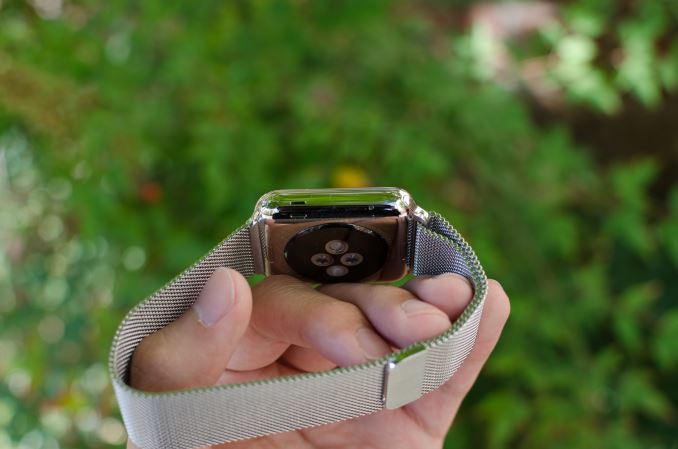
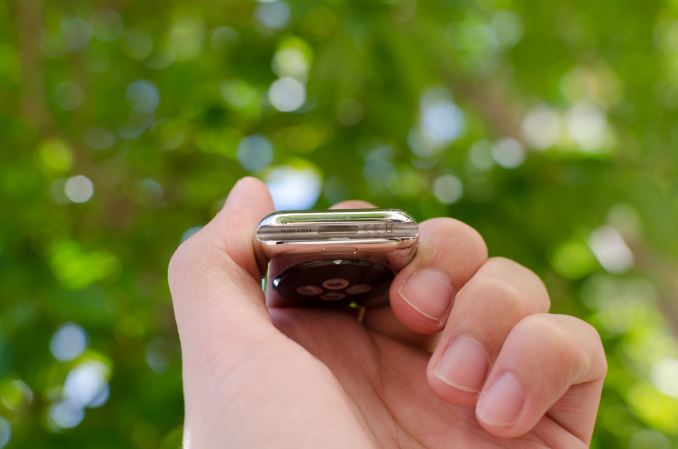
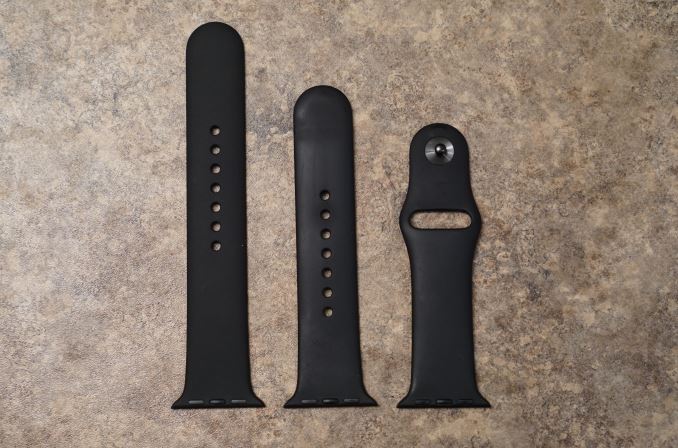
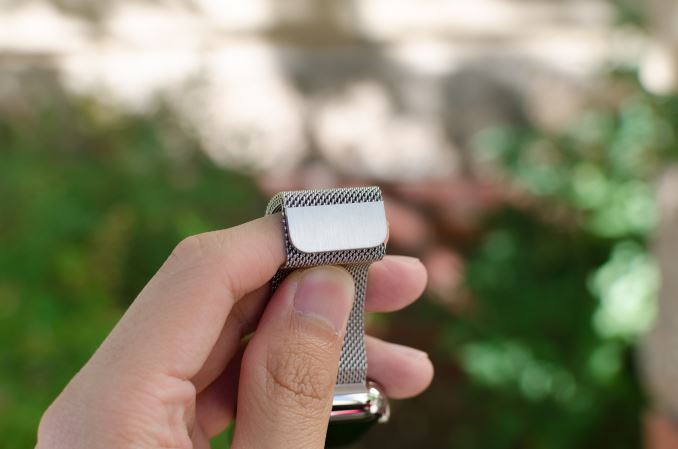
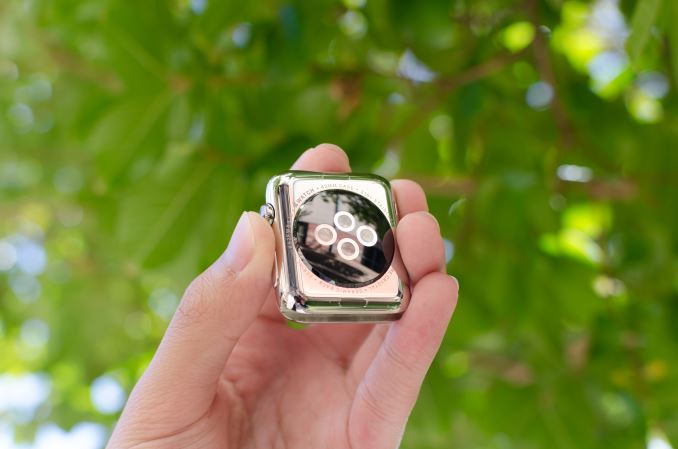








270 Comments
View All Comments
Shadowmaster625 - Monday, July 20, 2015 - link
OMG it taps your wrist when you get a notification. I will never ever have to miss an important txt ever again. I am going to rush out right now and plunk down $600 for this, and another $800 for an iphone so I can use it.Just kidding. Who are you frickin kidding? $1400 for a wrist tap. lol. How about this? If I'm expecting an important call or message, I will look at my phone more often. And NOT spend $1400 doing it.
Stuka87 - Monday, July 20, 2015 - link
If you don't want to live in the 21st century, but all means, don't. Smart phones are used by the majority of the population on earth, but nobody is forcing you to use one. Feel free to spend your money elsewhere.But it should be noted, VERY few smart phone owners pay the retail price.
BMNify - Monday, July 20, 2015 - link
What?? Almost all smartphone owners pay Full retail price for unlocked phones throughout the World, not everyone is a Slave to the carriers like in the USA.Guspaz - Monday, July 20, 2015 - link
US, Canada, UK, France, Australia, Singapore, all have major carriers doing phone subsidies. Not every country does, but many (most?) do.Ronald Hummelink - Monday, July 20, 2015 - link
In most markets these days these 'subsidies' are finance constructs. You repay the loan through the higher subscription fee. Evidence of that is many of these markets offer 'sim only' contracts significantly cheaper than bundled deals.Kristian Vättö - Monday, July 20, 2015 - link
Exactly. The 16GB iPhone 6 is $649 in the US without a contract.Guspaz - Tuesday, July 21, 2015 - link
What's the difference? They try to gussy them up and give them fancy names like "tabs", but they're just contracts by another name. THe only difference is they don't have a fixed length.The government (CRTC) didn't buy it either, and in the wireless code that sets the maximum amount of time before the balance owing (after which the ETF/ECF must reach zero) after 24 months, they simply defined these "tabs" as "contracts of indeterminate length", and applied the same 24-month restriction to them.
hughlle - Monday, July 20, 2015 - link
But are they subsidising the phone, or the service? I bought my HTC on contract, and however you look at it, I've now paid out more than the retail cost of the phone. In my mind it is the service that they are subsidising, not the phone.extide - Monday, July 20, 2015 - link
That doesnt even make sense, how could the carrier subsidize the service? They are subsidizing the phone by charging you extra for wireless service. The thing is that they never drop the price of your contract, so even after you have repaid the cost of the phone, you are still paying that higher price.Imagine if you bought the phone at TMobile who DOES have a lower service price when you do not get a subsidized phone. Say you also get a small loan to pay for the phone (T-Mo does this) -- once that 'loan' is paid off -- your monthly bill effectively goes down as you are just paying for the service.
Manch - Monday, July 20, 2015 - link
I keep my phone in my front pocket. If I get a text or what not the vibration tickles me downstairs a bit to let me know....